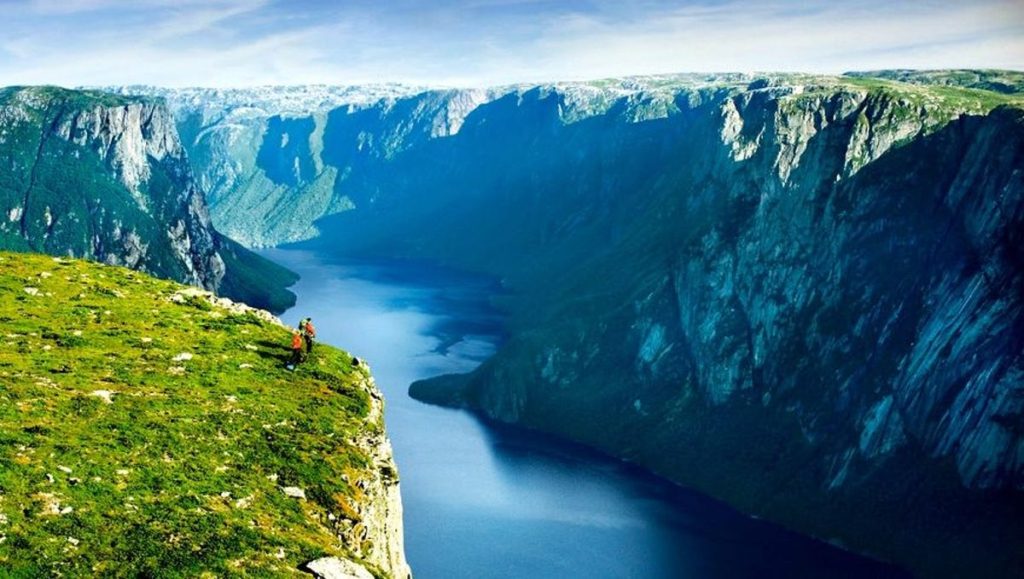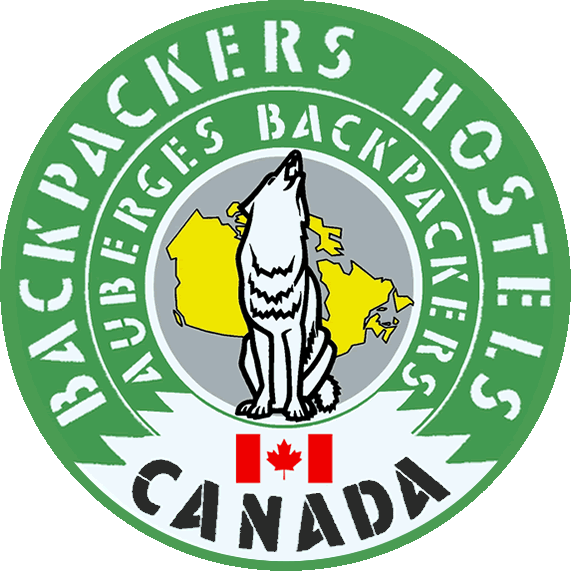When you hear the word “fjord”, you might think of Scandinavian countries like Norway, but Canada is also a great place to take in the beauty of these natural wonders.
A fjord is a long, narrow bay formed by the movement of a glacier over time. These immense sheets of ice slowly move downhill through valleys into the sea, and erode the ground beneath them until it is below sea level. Then, when the ice melts, the sea fills the valley, creating a narrow inlet flanked by steep sides or cliffs.
Canada is home to many of these dramatic natural features and it is possible to visit them by land or by sea on both coasts. This guide outlines the best locations to see Canadian fjords up close.

The Arctic Archipelago and Coastline
The frozen north of Canada is one of the best places to find fjords, with hundreds along the coasts of both mainland Canada and the many islands that make up the Arctic Archipelago. This area includes parts of the Yukon, the Northwest Territories, and Nunavut.
The Arctic Ocean is considered an area of natural beauty thanks to its wildness — the population is small and settlements are few and far between when you get this far north. The indigenous people who inhabit these regions take care of their environment. If you are lucky enough to visit places like Victoria Island and Ellesmere Island, you will see some of the most picturesque fjords in the world.
Reaching the Arctic coast by land can be challenging, especially if you’re visiting from overseas. Some of the island can be reached by air, but one of the best ways to see the fjords is to take a cruise. There are many available, and some offer the chance to visit part of Greenland in addition to Canadian locations like Baffin Island.
Whichever way you choose to visit, you should definitely pack multiple layers and prepare for a long, cold journey whether you’re taking a cruise or heading overland. The Arctic is no place for t-shirts and shorts, but if you wrap up tight, the experience is well worth it.
Quebec
The French-Canadian province is known for its unique culture, cuisine, and European-style architecture, among other things, but it is also home to many scenic fjords.
Northern Quebec, along the Hudson Strait, is a good place to explore glacial coastal valleys, while further south, close to Quebec City, you can find the Saguenay Fjord National Park. 60 miles long and 900 feet deep, this fjord is one of the most impressive in the province. The surrounding park makes a great place to hike and take in the spectacular vistas.
With various summer and winter activities available nearby, Saguenay Fjord is perhaps the ideal Canadian fjord to visit. Unlike in the north of the province, the climate is more temperate and you won’t need to wrap up in as many layers unless you come during the winter.
Newfoundland and Labrador
Canada’s easternmost province is home to various impressive fjords. In the mainland part of the province, Labrador, you can visit Hebron Fiord, Nachvak Fiord, and Saglek Fiord, to name a few.
If you venture to the island of Newfoundland, you have got to visit Gros Morne National Park. This UNESCO World Heritage Site has 19 mile (30 km) fjord called Western Brook Pond, whose water has the highest purity rating possible. The tallest waterfall in eastern North America (Pissing Mare Falls) flows into this fjord. Other fjords in the park include Trout River Big Pond and Bonne Bay.
The park is also home to an abundance of wildlife, from its booming population of moose to black bears, beavers, river otters, harbour seals, whales, and dolphins.

British Columbia
Fjords can also be found on the west coast of Canada in British Columbia (BC). Starting as far south as the Georgia Strait (which separates Vancouver Island from the mainland), fjords can be found all the way along the BC coast to the border with Alaska — in fact, they continue well into the US state.
You can take a cruise from the city of Vancouver to Alaska, taking in this remarkable stretch of coastline and venturing into some of the larger fjords.
Notable fjords in BC include those leading into Howe Sound, just northwest of Vancouver, and the Portland Canal on the Canadian-Alaskan border, which extends around 71 miles (114 km) inland.
Check out some Hostels in British Columbia
As with most Canadian adventures, the further north you go, the colder it gets. Particularly if you take a cruise in the winter months, pack multiple layers and be prepared for low temperatures and snow.
However, you may be rewarded with spectacular views and wildlife — grizzly bears, deer, and whales can often be seen from ships along this stretch of coast.


